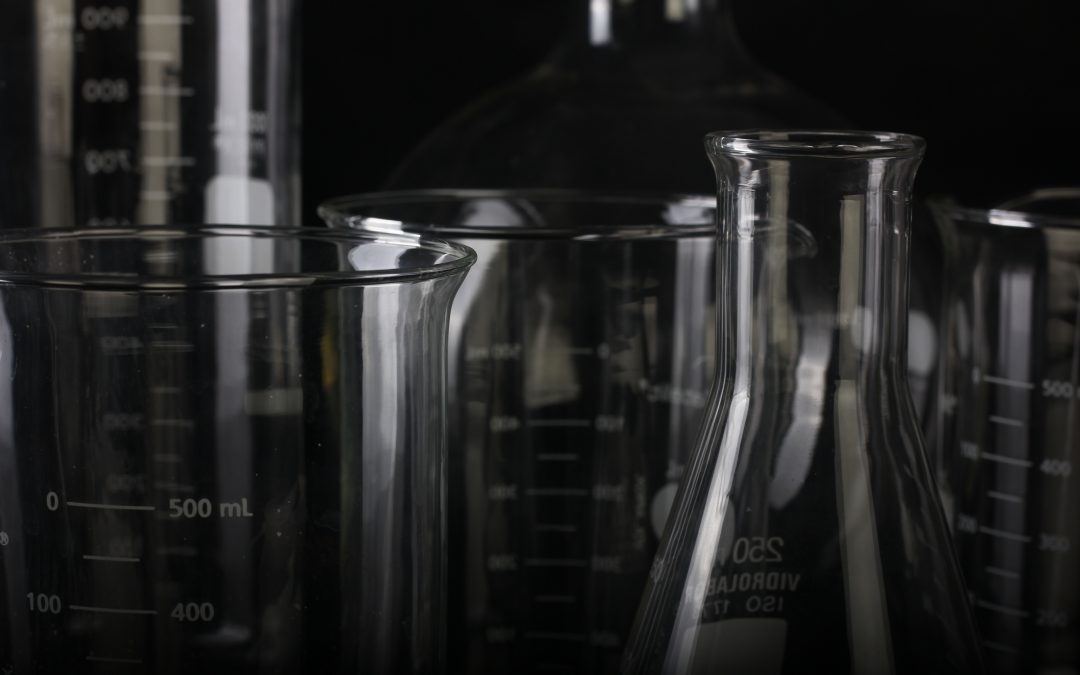Desperate times call for desperate measures, but don’t get tricked into all of the DIY cleaning hacks you find on the internet. Do your research first to make sure you’re not causing more harm than good. Here at Core, we take pride in keeping our customers safe in the chemical world. Take a look at 5 of the most toxic combinations that some DIY-ers are suggesting people use to clean their homes and offices.
Vinegar + Baking Soda
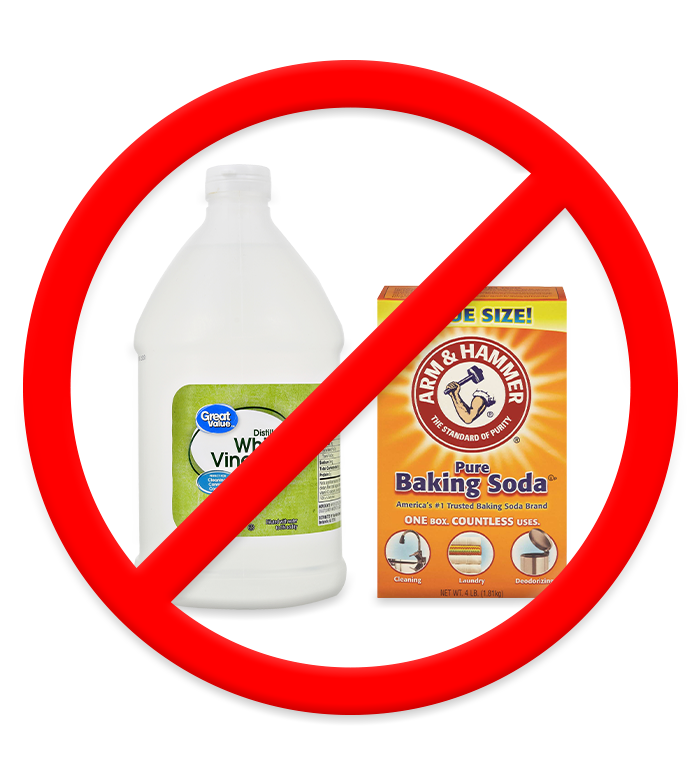
Do you remember the erupting volcano experiment? The one where the lava comes bubbling out of the top of the volcano like a real-life eruption in your own backyard. While this might make for a great childrens’ science experiment, the results of using a similar combination could cause harm to anyone trying to create a DIY cleaning product. The claim for mixing vinegar and baking soda is that you can remove nearly all tough soils, stains and grease spots. What happens when you want to save this concoction for later use? These two ingredients mixed together create carbon dioxide which can be highly explosive if trapped in a container. Over exposure to carbon dioxide can also result in an array of symptoms including headaches, difficulty breathing, dizziness, restlessness and more. What people don’t realize is that combining vinegar and baking soda and letting it set only results in water and sodium acetate – not a very effective cleaner and also a skin and eye irritant.
Bleach + Vinegar
If you didn’t already know, bleach is a disinfectant, but you may not know that vinegar also has disinfecting properties since it’s an acetic acid that’s capable of killing some bacteria and viruses. Some of the DIY community might try to convince you that combining these two ingredients will create a stronger disinfectant that will kill virtually any germ. Don’t try it, this is a terrible idea. Mixing bleach and vinegar creates a very toxic chlorine gas that irritates the eyes, throat and nose. Breathing problems, coughing, burning and watery eyes are all minor complications from exposure to this gas. Since chlorine gas can be absorbed through the skin, inflammation, swelling and blistering is of major concern especially for those that are more sensitive to chemicals. Chlorine gas is also heavier than air and tends to fall to low-lying places more easily affecting pets and small children.
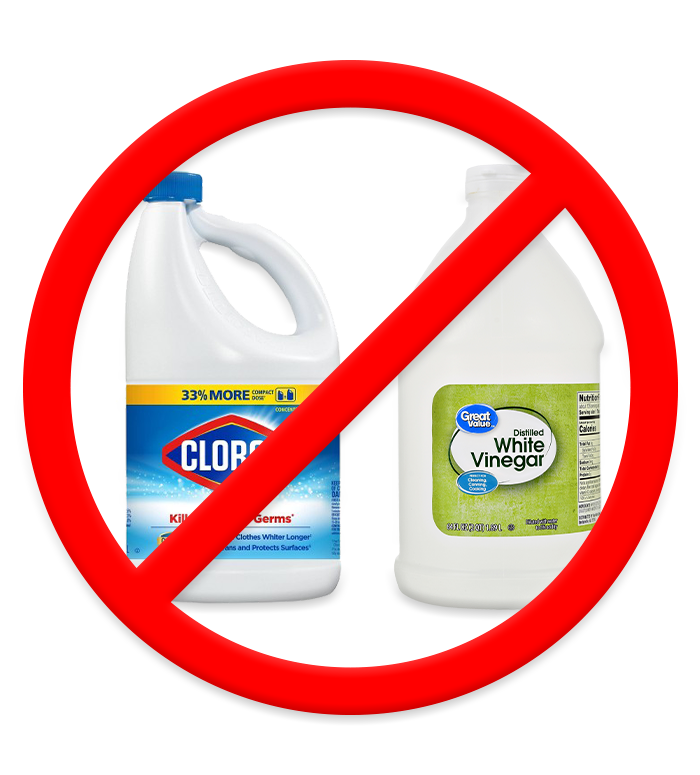
Bleach + Rubbing Alcohol
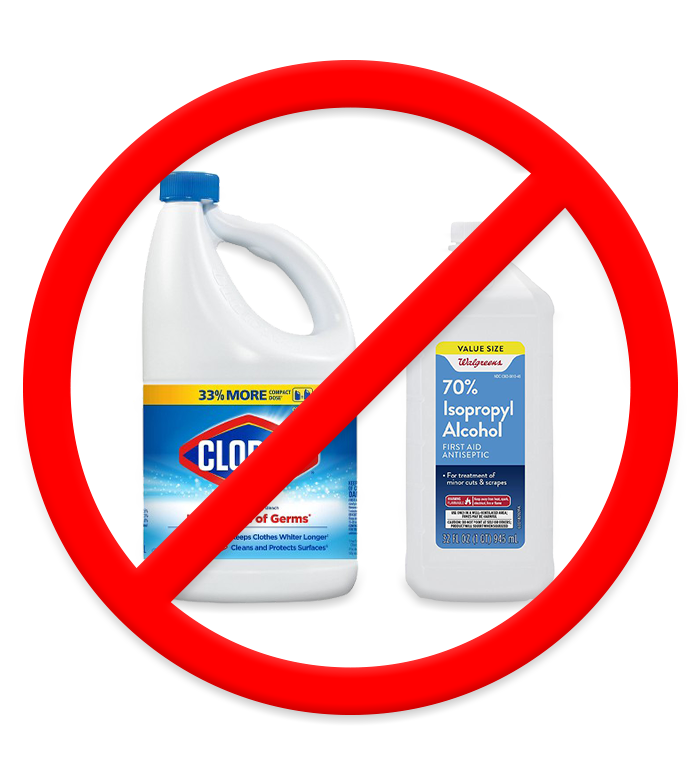
Just like combining bleach with vinegar is a bad idea, so is mixing bleach with rubbing alcohol. Chloroform is created by combining bleach with rubbing alcohol which is damaging to the eyes, skin, liver, kidneys and nervous system. This dangerous chemical is a solvent used to help other substances dissolve, but most people don’t know all of the dangerous and life threatening side effects. This isn’t a mix to take lightly and with all the current buzz around hand sanitizer, people need to know that mixing hand sanitizer with bleach can produce the same outcome as bleach and rubbing alcohol. This deadly blend can occur with any product that contains alcohol.
Hydrogen Peroxide + Vinegar
Hydrogen peroxide, a known disinfectant, and vinegar, which contains disinfecting properties, is another combination to avoid. This combo creates peracetic acid – a corrosive and highly reactive material. While this is a material that’s used in everyday applications for the medical field, food industry and water treatment centers, these professionals know the precautions to take when dealing with this chemical. In low concentrations eye, throat and skin irritation along with difficulty breathing may occur. Damage to the eyes, throat and skin is also possible with higher exposure.
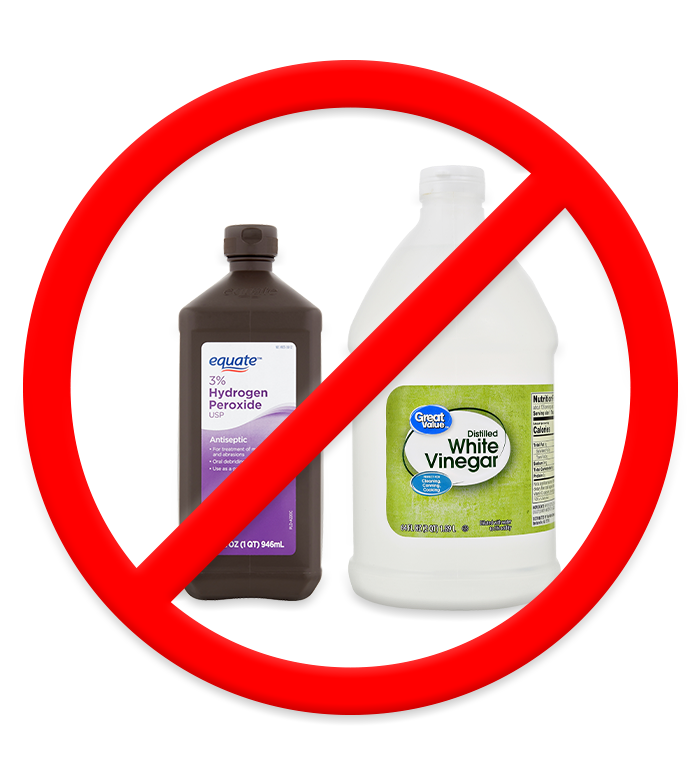
Ammonia + Bleach
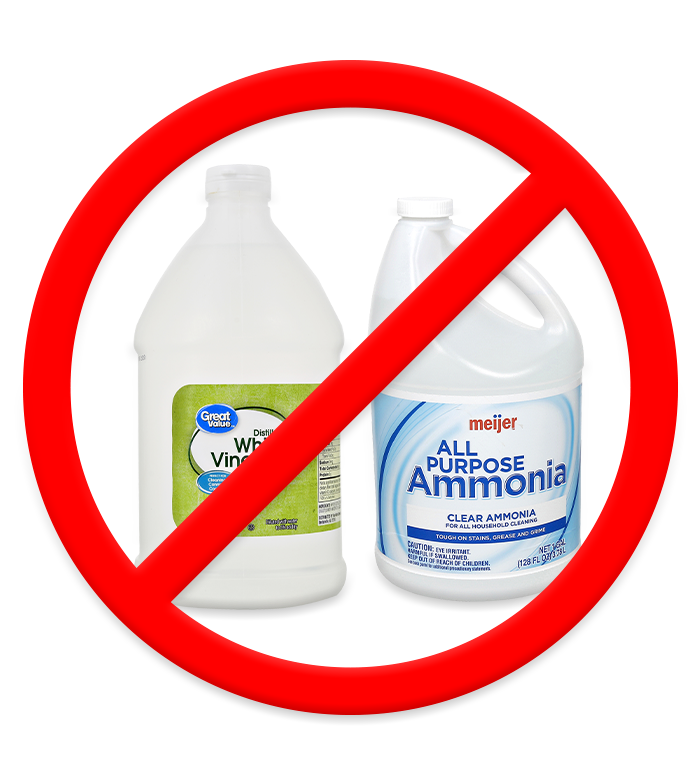
Ammonia is found in so many different household and industrial cleaning products like glass and window cleaners, multi-surface cleaners, drain and oven cleaners and toilet bowl cleaners. Needless to say, you should always check to see if a product you’re using contains ammonia, especially if someone tells you to combine your product with bleach. There are still people willing to try anything to get a pesky stain or problem mess cleaned up and don’t stop to think about the negative side effects of combining chemicals. The combination of an ammonia product and bleach, while it may seem like the creation of a “super” cleaner, is actually deadly chloramine gas. Immediate exposure to this gas causes eye, nose and throat irritation with the potential to cause coma and death in extreme overexposure.
**To reiterate, you should NEVER combine any type of cleaning chemical with another chemical or product, but some people still do this despite the all the warnings and potential risks.**
While all of the chemicals listed above can be used in responsible ways that won’t do as much harm to you or the environment you’re cleaning, not all of them are the safest even on their own. Bleach is very corrosive, rubbing alcohol and ammonia can cause more harm to airways while hydrogen peroxide and vinegar pose less of a threat when used on their own. So, how does Core Products Company combat everyday cleaning? We use our in-house chemist to safely test our products and their efficiency before offering them to customers. We don’t believe in using chemicals that pose potential harm to people or their environments. We do believe that hydrogen peroxide is the strongest and safest chemical that dominates every cleaning task.
What some people don’t realize is that hydrogen peroxide is a well known disinfectact that has been registered through the EPA since 1969 and is listed as an effective disinfectant against COVID-19. Our safe and effective go-to products come right from our HydrOxi Pro line. These products utilize a potent yet safe combination of hydrogen peroxide and orange oil to slice through dirt and clean almost any surface. HydrOxi Pro Concentrated Cleaner can be used in two different solutions to clean hard, stuck on messes and even something more delicate like windows and glass. The HydrOxi Pro Cleaning Wipes utilize the heavy dilution of the HydrOxi Pro Concentrated Cleaner to safely clean up quick messes and keep frequently used surfaces clean and germ free.
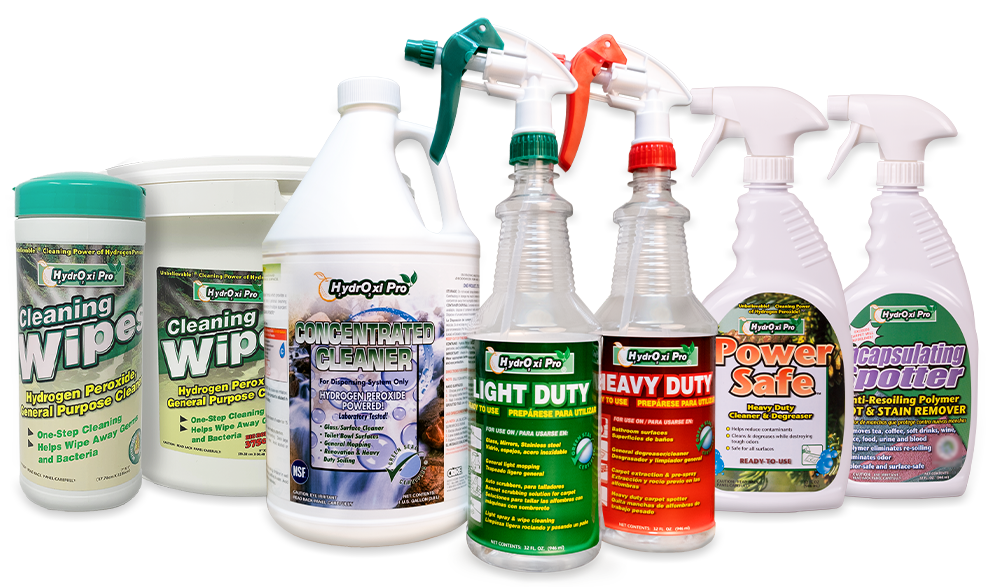
Bonus Content
The recent Coronavirus COVID-19 pandemic has sent people into overdrive trying to find hand sanitizer or even making their own. Some companies and individuals who have taken it upon themselves to create and distribute hand sanitizer to the greater public have had their product recalled for exposure to methanol. Methanol, or wood alcohol, is a toxic ingredient that has been the culprit of many hospitalizations resulting in vomiting, headaches, blurred vision, blindness, seizures, comas, nervous system damage and death in extreme cases. To help ease the minds of millions of individuals, the FDA has released this list of recalled hand sanitizers for consumer reference.

